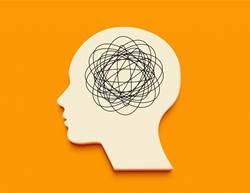Does your mind race? Do you often feel stressed or distracted? Do you wish you could just slow down? We’re never really taught how to calm a restless mind, but there’s a simple way to teach yourself to do so at any stage of life.
“A daily meditation practice improves your ability to return to the present moment and enhance your response to now,” says psychologist and behaviour analyst Dr Lori Ryland. It can profoundly ease worries, improve sleep and help you feel more focused and mindful.
Before you begin, note that there’s absolutely no wrong way to meditate. The following three practices – with step-by-step guidance from three experts – are meant to help you explore meditation to see what might bring you the most peace.
Practice #1: Do a mental body scan
How is your body feeling right now? Does your stomach feel anxious, or are your shoulders tense? By tuning in to your body in this moment, you’ve just done a simple body scan, a type of meditation that calls you to mindfully scan areas of your body and notice any physical or emotional sensations.
Daily mental stress can lead to subconscious physical tension and tightness in the body, and body scan meditation can help release these by centring your focus on one body part at a time, says Rach Junard, a meditation expert and wellness educator.
In addition to helping you become more present, directing your focus to various parts of your body during a body scan meditation can also help you reduce stress, decrease fatigue and get better sleep, research has shown. Moreover, chronic pain sufferers who listened to a 10-minute recorded body scan meditation reported reduced levels of pain, according to a report published in the Journal of Behavioral Medicine.
The body scan meditation
Junard shares a body scan meditation practice.
- Lie down on a mat or another comfortable surface. Close your eyes or maintain a soft gaze to limit visual distraction.
- Take some deep breaths. Slowly inhale through your nose, expanding your belly and chest. Gently exhale through your nose, emptying your lungs completely. Continue, paying attention to bodily sensations, starting with your feet and moving up.
- Observe sensations and feelings. Let yourself notice any sensations without judgement. As you scan from your feet to the crown of your head, offer nurturing language to yourself with every exhale. This helps you stay present. Try tender phrases such as “I love my feet” and “I love my belly.”
- Bring your awareness back to the moment. When you’re ready, let your breath lead your awareness back into your space. Gently move your fingers and toes; move your chin from side to side.
- Finish by offering yourself a self-embrace. You can do this by drawing hands to opposite shoulders (or by placing one hand on belly, one hand on shoulder).
Practice #2: Recite a mantra
Consider how many thoughts you have throughout the day. Chances are a lot of them are adding to your stress about things that have happened or might happen.
A mantra-based meditation allows you to bring your focus to the present by repeating a word or phrase. “This can be done silently, by whispering, by chanting or by singing aloud,” says wellness coach Kelsey J. Patel.
“Mantras [can be] used with or without spiritual elements.” To choose one for today, Kelsey suggests deciding what you want to work through and coming up with an affirmation of the behaviour you wish to create, such as “I am ready for change” or “I have all my answers within”. For a more spiritual connection, you can try a simple “Om”, which is a Vedic Sanskrit word – derived from Hindu and Buddhist teachings – that represents supreme power.
One study found that chanting “Om” might help deactivate the right amygdala, a part of the brain associated with negative emotions like fear and sadness.
The mantra meditation
Patel shares a mantra meditation exercise.
- Choose a mantra. What are you hoping to invite into your world or release during your practice today? Pick a mantra to support you.
- Find a comfortable position. Close your eyes and take several deep, long, slow breaths. Allow yourself to melt into your seat.
- Repeat the mantra out loud. With each breath, say the mantra over and over, in unison with the natural rhythm of your breath.
- Now repeat the mantra in your head. After about 20 recitations out loud, transition to reciting your mantra in your head. As thoughts arise, simply return to your mantra and continue to repeat it in your mind.
- Continue reciting your chosen mantra both out loud and in your head. Do it for three to five minutes, or however long you have set aside for your meditation today.
Practice #3: Visualisation
Remember how easy it was to dream up imaginary worlds when you were a kid? That same technique is used to do a visualisation meditation. Imagining a calming place or a pleasant experience can lead to a range of emotional and physical benefits, says Reiki master Frances Naudé.
Visualising a task can even make you more successful at completing it, according to a 2017 study published in Psychology. Visualisation meditation provides you with a momentary escape from reality, and it naturally reduces stress and anxiety, a study published in Frontiers in Psychology found.
Frances says this type of meditation is great for beginners. “Many times people give up their meditation practice because they struggle to stop their thoughts from flowing through their minds,” she explains. “While this is 100 per cent normal, it can be very frustrating and disheartening.”
With visualisation, you’re able to ease into a meditative state through attention, not silence: “By giving the mind something to focus on, you naturally quiet the ‘noise’ and you’re more likely to drop into that quiet, meditative state through the imagery journey.”
While you can choose to visualise something you hope to accomplish, focus today on eliciting an emotion – in this case, a sense of peace. So, what brings you calmness? Our instructions will focus on the beach, but the beauty of this meditation practice is that you can pick any environment that suits you.
The visualisation meditation
Reiki master Frances Naudé shares a visualisation meditation practice.
Read through the steps, then go through them in your own way. It’s okay if you don’t remember the exact words, but focus on the senses you’re experiencing as you visualise.
Step 1: Prepare your mind and your body
Sit or lie down and then set an intention. For today, it can be to calm your mind for peace and bliss. Our environment will be a warm, sunny beach with tall palm trees, crystal-blue water and vibrant coral reefs. You may want to set a timer for 10 minutes, or you may prefer to remain in this visualisation state for the amount of time that serves you best.
Step 2: Visualise
Close your eyes and breathe deeply. Start to smell the salty air and feel the warm wind. Imagine sand underneath you, palm leaves rustling in the wind, and the gentle lapping of the waves. Notice all that surrounds you and, when you’re ready, envision yourself standing up. Walk mindfully to the ocean, letting the warm water kiss your toes. Maybe you want to dive in. If so, feel the serene sway and support of the ocean.
When you’re ready, walk out of the water and notice how you’re warmed by the sun. Walk, observing shells, birds, dolphins, and other magical sights. It’s just you and this place, perfectly at peace. Continue to be here, doing whatever feels the most calming and enjoyable. Remember, there’s no right or wrong way to practise visualisation.
Step 3: Gently bring your awareness back to you
When you’re ready to finish (or when your timer goes off), sit or lie down on the imagined beach and mindfully feel the visualisation dissipate as you return to your current state. Bring your awareness back to your body and your surroundings, grounding yourself with your newfound sense of peace. Recognise how your mind feels calm and be grateful to yourself and your practice.









